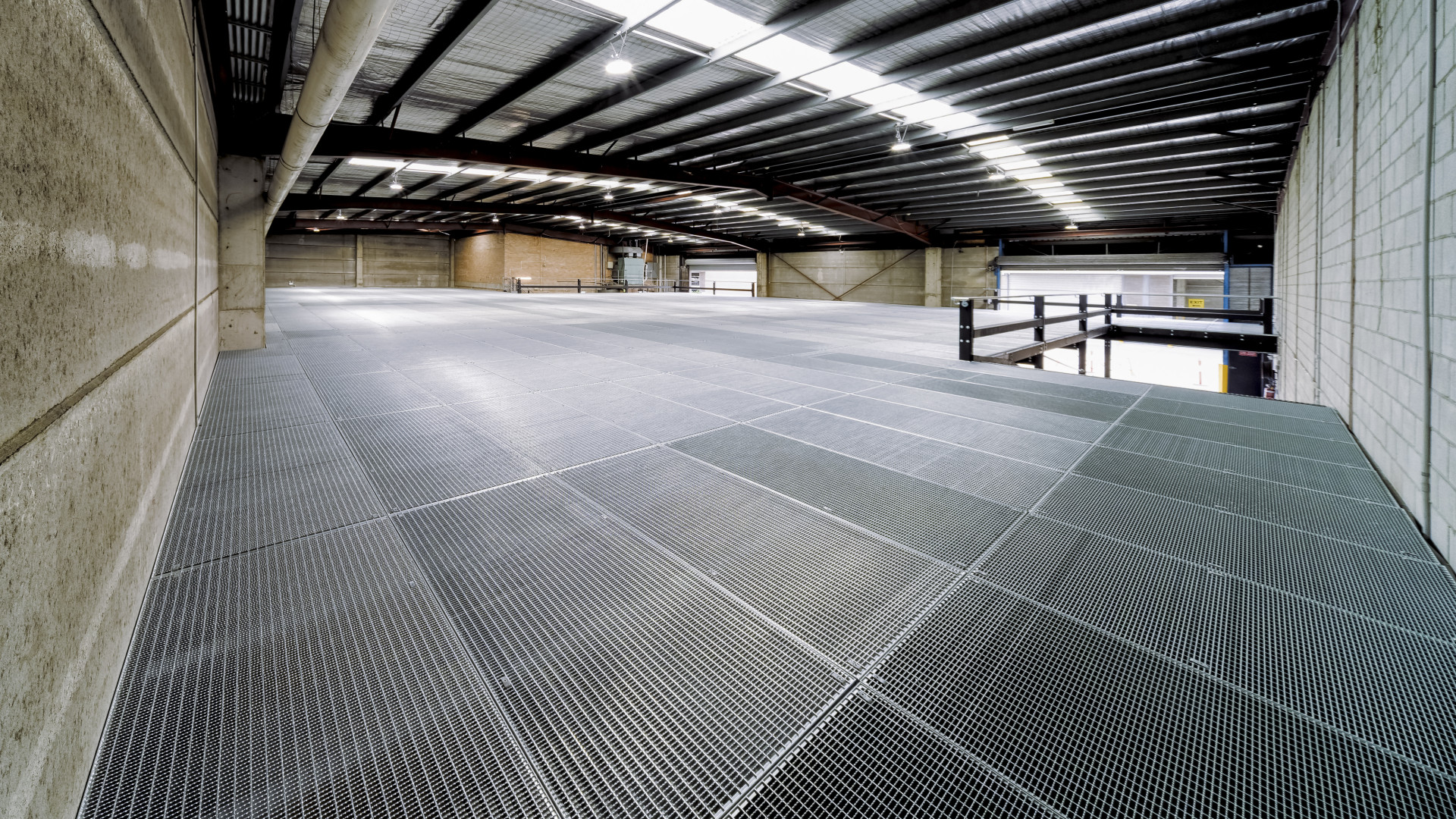When it comes to building or upgrading warehouse mezzanine systems in industrial environments, the grating underfoot often plays a bigger role than expected. While it might not be the flashiest component, mezzanine grating is foundational to workplace safety, structural performance and your longer-haul cost efficiency.
Whether you're designing walkways, platforms for machinery or elevated storage levels, picking out the right grating is critical. From airflow and fire safety to weight loads and OH&S compliance, getting this choice right can make all the difference.
In this guide, we lift the lid on the leading mezzanine grating options - including Meiser and other high-performing alternatives - and share practical advice for choosing the best fit for your project.
What is mezzanine grating?
Mezzanine grating is a load-bearing surface material typically made from metal or composite panels, used to create flooring for elevated workspaces. It's designed not only to support weight but it also allows for air and light circulation, aiding in fire safety and supporting safe and efficient foot traffic.
In busy logistics and manufacturing facilities, mezzanine grating is used in everything from high-capacity storage platforms to walkways for machinery access. The key is choosing the right material and specification for the intended use - and understanding what those specifications mean in practice.
Types of mezzanine grating materials
While it may sound cliché, there really is no one-size-fits-all when it comes to industrial mezzanine grating. Your choice of material will influence not just strength and cost, but durability, maintenance needs and safety.
1. Steel grating for mezzanine floors
-
Pros: Extremely durable, high load capacity, long lifespan, available in various bar thicknesses and spacings.
-
Cons: Heavier than other options, prone to corrosion unless galvanised or treated.
-
Best for: Heavy-duty storage platforms, industrial traffic zones and fire-sensitive areas.
2. Aluminium grating
-
Pros: Lightweight, corrosion-resistant, easy to install.
-
Cons: Lower load capacity than steel; more expensive.
-
Best for: Walkways, moderate-traffic access platforms, environments prone to moisture.
3. FRP (Fibre-Reinforced Plastic) Grating
-
Pros: Non-corrosive, chemical resistant, lightweight, low maintenance.
-
Cons: Limited load-bearing capacity, less rigid under heavy point loads.
-
Best for: Food processing, chemical storage or marine applications.
Spotlight on Meiser grating (and alternatives)
Meiser is a household name in the warehouse grating world, and with good reason. Their precision-engineered steel gratings are popular across Australia for their quality, slip resistance and compliance with industrial standards.
Meiser grating typically features serrated surfaces for added traction, galvanised coatings for corrosion protection and a wide range of load-bearing options. But they’re not the only players in the market.
Other alternatives - from pressed-locked steel to expanded metal grating - offer similar performance depending on the application. The trick is matching the product to the use case:
-
Use Meiser or comparable steel grating for: high-traffic warehouse floors, conveyor platforms, or areas exposed to sparks or heat.
-
Choose aluminium or FRP grating: if weight savings, corrosion resistance or chemical safety is the top priority.
Ventilation and fire safety benefits
One major advantage of open grating systems is how they promote airflow. This is particularly important in warehouses or production floors with sensitive temperature or humidity requirements. Grated mezzanine floors help:
-
Allow hot air and smoke to rise through the platform in case of fire
-
Enable sprinkler systems to operate effectively across industrial mezzanine floors
-
Meet ventilation requirements for equipment like conveyors, compressors, or automated systems
To ensure compliance with AS/NZS 1170 and AS 1657 standards, always factor in ventilation and smoke dissipation when choosing grating types.
Load capacity and structural support
Structural integrity starts with correct load calculations. The wrong choice in bar spacing or grating type can lead to deflection or worse - complete failure under stress.
When evaluating load-bearing capacity, look at:
-
Bar thickness: Thicker bars means higher capacity
-
Span between supports: Wider spans require reinforced or denser grating
-
Traffic type: Foot traffic, pallet jacks or automated robots
For heavier uses, steel bar grating with serrated edges and galvanised finish is often best.
Applications of industrial mezzanine grating
Grated mezzanine systems are used widely across logistics and manufacturing environments, especially where airflow, drainage or weight is a factor. Common applications include:
-
High-bay storage and racking platforms
-
Walkways between machinery or conveyor systems
-
Access ways above production lines or utilities
-
Platforms requiring sprinkler and fire suppression access
Their slip-resistant properties also make them suitable for outdoor loading docks or in facilities where wet floors are a given during daily operations.
Installation and maintenance considerations
Installing mezzanine grating requires more than just placing panels on beams. To get the most out of your investment:
-
Ensure proper panel alignment to prevent trip hazards
-
Use galvanised or coated products to combat corrosion
-
Schedule regular inspections to detect wear or damage
-
Clean debris regularly to maintain drainage and slip resistance
Gratings must be anchored correctly to prevent movement under load, and site-specific designs should always be reviewed by a structural engineer.
Why choose Unistor for grated mezzanine floors
At Unistor, we’ve designed and installed hundreds of mezzanine grating systems tailored to the unique needs of logistics, e-commerce, manufacturing and food processing facilities across Australia.
Our team works closely with engineers and facility planners to recommend the ideal grating solution - whether it’s a lightweight FRP setup for chemical storage or a heavy-duty steel grid for multi-tonne equipment.
When you partner with Unistor, you get:
-
Customised configurations based on layout, load, and compliance needs
-
Access to high-quality grating brands including Meiser and local alternatives
-
Long-term service and safety support for peace of mind long after installation
Conclusion
Choosing the right mezzanine grating isn’t just about ticking boxes, it’s about building safe, efficient and future-proof industrial spaces.
From fire protection and airflow to structural resilience and maintenance ease, the grating you choose affects your facility’s performance at every level.
For expert advice on mezzanine flooring design and installation, contact Unistor today. Our team is ready to help you find the right fit - no matter your industry or floor space.
Contact Unistor today to learn more about how Unistor’s warehouse mezzanine solutions can transform your operations.



